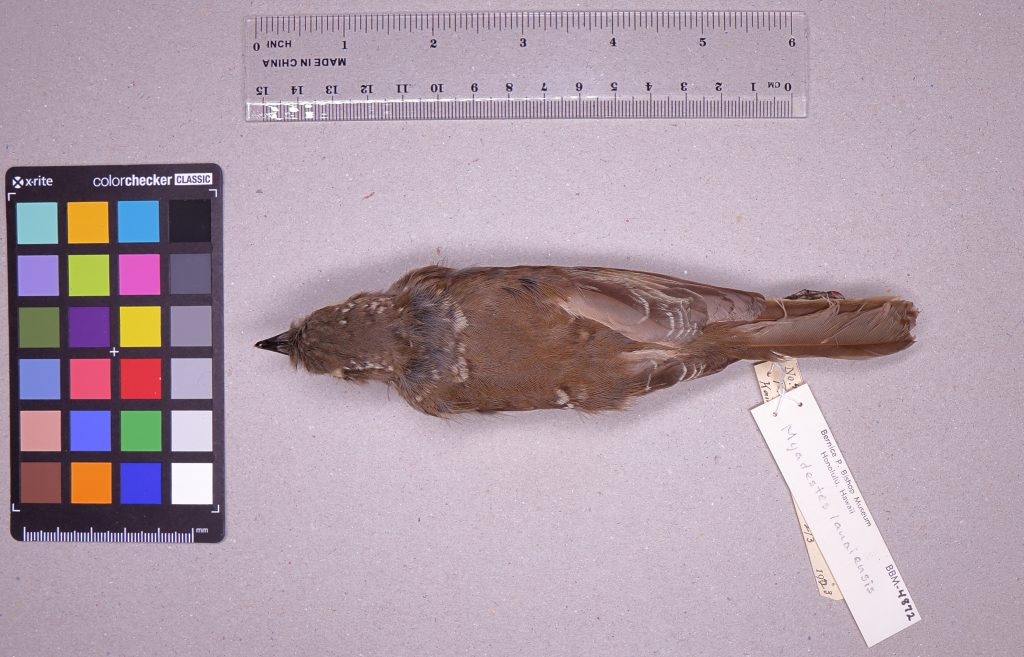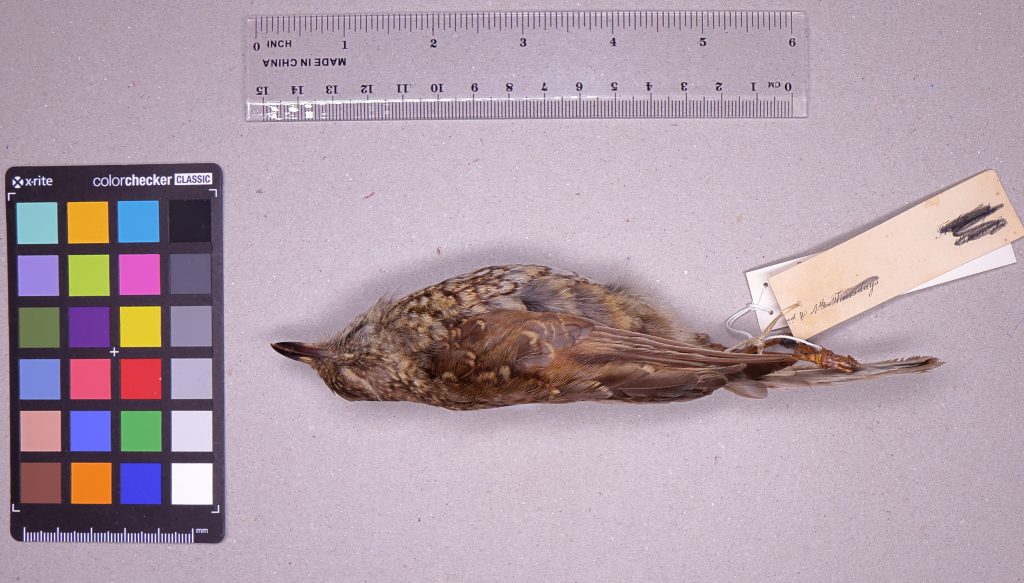Olomaʻo

Names
- ʻŌlelo Hawaiʻi: Olomaʻo
- Scientific: Myadestes lanaiensis rutha
Conservation Status
- Presumed Extinct
- Federally Listed as Endangered
- State Listed as Endangered
- State Recognized as Endemic
- NatureServe Heritage Rank GH —Known Only from Historical Occurrences
- IUCN Red List Ranking—Critically Endangered (Possibly Extinct)
- Revised Recovery Plans for Hawaiian Forest Birds—USFWS 2006
PC: Bret Mossman
Species Information
The oloma‘o is one of five species of Hawaiian solitaires (family: Turdidae). All adult Hawaiian solitaires have olive-brown and gray plumage. Oloma‘o are prolific singers often singing into the night, and the species engages in song flights. Their song, like that of many thrushes, is melodious. Similar to other Hawaiian solitaires, the species often trembles their wings when perched. Oloma‘o tend to stay or return to a particular site (philopatric), which result in rarely leaving their small home range. The species feeds on a variety of small fruits and insects. Little is known about their breeding biology, but it is presumed to be similar to the ‘ōma‘o (M. obscurus).
Distribution
Unknown. Probably extinct. The historic range included the native forests of eastern Moloka‘i and Lāna‘i. Historically the species also may have occurred on Maui, where subfossils of Hawaiian solitaires are abundant.
Habitat
Unknown. Historically occupied closed, wet and mesic ‘ōhi‘a (Metrosideros polymorpha) forests across a broad elevation range. The areas where the species was last observed are managed by the State of Hawai‘i as a Natural Area Reserve or by private conservation entities (e.g., The Nature Conservancy).
Additional Resources
For more information and references visit the DLNR State Wildlife Action Plan factsheets. DOFAWʻs species pages and State Wildlife Action Plan fact sheets are provided for general information and are not meant to be a citable, original source of data. If you are a student, researcher, or writer looking for a citable source, please explore the references below or find other original data sources, rather than citing these webpages. The references below were provided by the authors of the State Wildlife Action Plan fact sheets at the time of drafting:
- IUCN Red List of Threatened Species. 2015. Version 2014.3. Available at: www.iucnredlist.org. (Accessed May 2015).
- Scott JM, Mountainspring S, Ramsey FL, Kepler CB. 1986. Forest bird communities of the Hawaiian islands: their dynamics, ecology and conservation. Lawrence, (KS): Cooper Ornithological Society.
- U.S. Fish and Wildlife Service. 2006. Revised Recovery plan for Hawaiian forest birds. Portland, (OR): U.S. Fish and Wildlife Service.
- Wakelee KM, Fancy SG. 1999. ‘Oma’o (Myadestes obscurus), kama’o (Myadestes myadestinus), oloma’o (Myadestes lanaiensis), and ‘amaui (Myadestes woahensis). In The Birds of North America, No. 460 (Poole A, Gill F, editors.). Philadelphia, (PA): The Academy of Natural Sciences; and Washington DC: The American Ornithologists’ Union.



